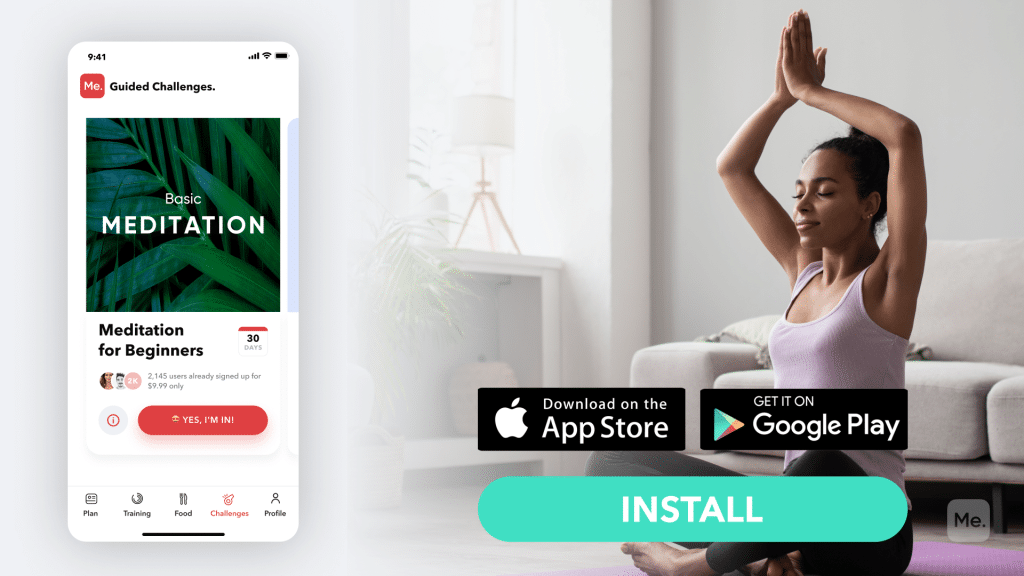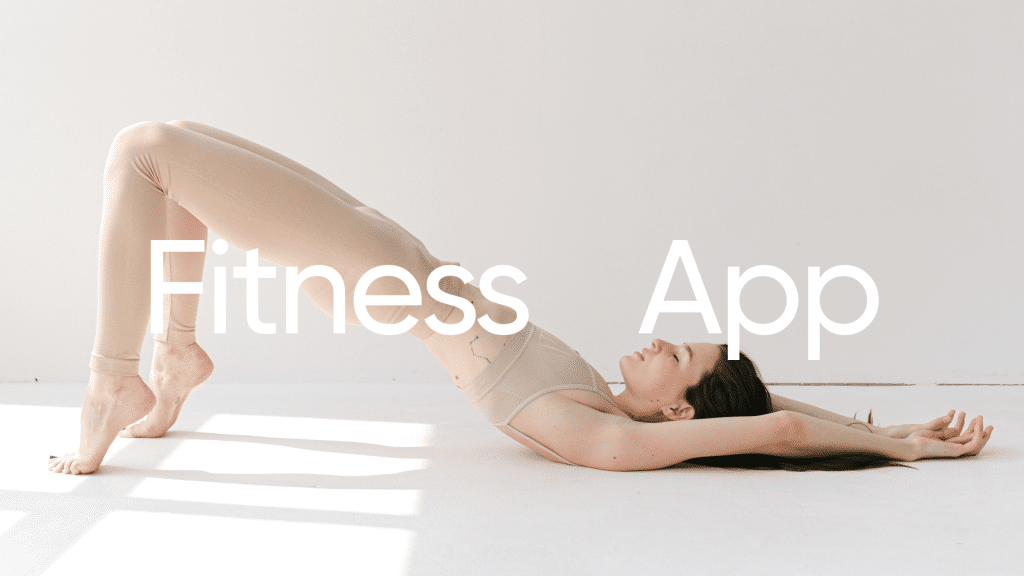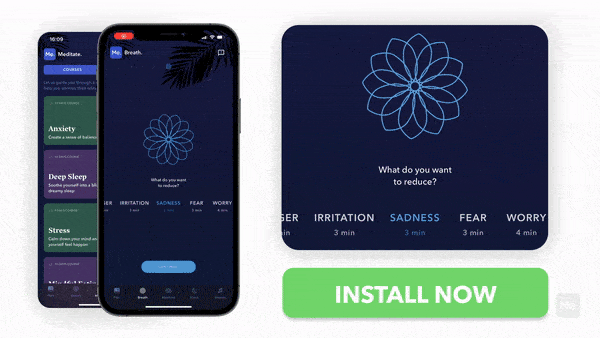Contrary to popular belief, an empty, clear mind is not a bad thing. Our society and generation have conditioned us to believe that your mind must always be buzzing or working. This is not true. You do not have to always come up with ideas or formulate plans, or even think about your future. Just like how your body needs a break after working out, so is your mind from the constant stream of thoughts. Emptying the mind is a useful tool to learn as it helps you give your brain a break.
According to the dictionary, to empty your mind means to try your best to think about nothing (8). It means to purposely put a stop to the constant stream of thoughts that are with us every day. When you learn the practice of emptying your mind, the brain becomes accustomed to entertaining a few thoughts per minute instead of automatically replacing a new thought with another (17).
While not all thoughts that constantly go through our minds are bad, sometimes we may experience thinking of negative and unwanted ones, which if not quickly taken care of could lead to great distress, anxiety, depression, and even violent outbursts to some people (14). Feelings you get when emptying your mind are a sense of calmness and eventually clarity.
Read More: Meditation Thoughts: Bring Your Mind To A Point Of Stillness And Clarity
How To Empty Your Mind?
Feeling overwhelmed by your thoughts is very common, but the good news is that there are several ways to help you counter this.
They are as follows:
-
Find A Distraction
This is the quickest way that one could use for emptying the mind. Whenever you feel that your thoughts are getting jumbled up, or you cannot stop thinking about that one problem or fear, find something to distract yourself with. Through studies, it has been found that the brain can only concentrate on one thing at a time (2).
Simple and healthy ways to distract yourself include (6):
- Playing some soothing music, e.g., instrumentals or jazz
- Cuddling with your pets
- Taking a walk
- Doing some chores
- Exercising
- Taking a nap
- Watching some entertaining TV shows
-
Try Journaling
Journaling is another great way to help with emptying your mind. This simple practice has been proven to help reduce stress, manage depression and anxiety (7), boost your mood, keep your mind sharp, improve your immune function, and help you get in touch with your emotions (3). Whether you are using a pen and paper or an app to pen down your thoughts, the act of writing them down will help you clear and empty your mind.
BetterMe: Meditation & Sleep app can help you transmute stress into serenity, pull you up from the doldrums, free your mind from the cares and worries of the world, quell racing thoughts and infuse you with tranquility! Start using it now and change your life!
-
Try Mindfulness
Mindfulness is described as a type of meditation that helps you focus on being intensely aware of what you are sensing and feeling in the moment, without interpretation or judgment (11). Practicing mindfulness can be incredible for busy people. Whenever you feel overwhelmed by a decision, take a minute to practice some mindfulness techniques. A simple example is to just focus on your breathing. This takes out all the thoughts from your mind other than just noticing how your body expands and contracts through every inhale and exhale.
-
Thought Suppression
This is the practice of trying to ignore or control thoughts that we find threatening, distressing, or even embarrassing. A study done in 2012 showed that suppressing or voluntarily forgetting unwanted memories can help individuals cope with negative or traumatic experiences (12).
A point to note, however, is that while some research has found that this practice can help some, it can also have negative side effects. Since it can increase your mental load, it may eventually bring back your bad thoughts to haunt you (15).
Read More: Analytical Meditation: Taking A Different Approach To Your Thought Process
-
Connect With Friends Or Family
Whenever you are stressed, you may not feel like wanting to be around people. Hiding away and trying to solve your problems may seem like a good idea, but in truth, it may make you even more stressed. Being surrounded by family, friends, and loved ones, even without actively participating in the activities they are doing is a great way to unconsciously empty your mind (1).
-
Meditation For Emptying Mind
The benefits of mediation are endless. This simple practice can help with (9):
- Increasing self-awareness
- Increasing imagination and creativity
- Increasing patience and tolerance
- Managing chronic pain
- Managing chronic illnesses such as heart disease, as well as other diseases such as asthma, cancer, tension headaches, and High Blood Pressure, among others.
- Reducing the symptoms of insomnia
- Metal health conditions like anxiety and depression
How To Practice Meditation For The Emptying Of Mind?
Here are some simple steps to try:
- Find a calm, quiet spot in your home to sit.
- Keep your back straight, but not stiff, and your legs crossed in front of you with your hands on top of your legs.
- Slowly close your eyes and simply sit and feel your presence. Pay attention to your breathing. Breathe deeply to feel your body expand when you breathe in and contract when you breathe out.
- When your mind starts to wander, bring it back to your breathing.
- Let go of any thoughts or feelings that are in your mind. If any new thoughts try coming in, let them go and do not hold to any of them.
- Try keeping your mind as empty as possible. If you initially cannot do this, opt to just stay focused on your breathing. Please note that your eventual goal will be to keep your mind completely empty that you do not have to pay attention to your breathing.
- Do this for up to 2 minutes (or more if you are able), and once the time is up, slowly open your eyes and let them and your body re-familiarize themselves with your surroundings before getting up and walking away.
What Are The Best Yoga Asanas For Emptying Of Mind?
Before determining which asanas would work best for emptying the mind, we must first define what yoga asanas are. To anyone who may not be familiar with the term, asana is one of the eight limbs of yoga. These limbs are as follows (4):
1. Yama
There are five Yamas in total, and these are moral directives used to guide the practitioner’s behavior towards others. They include nonviolence towards others, truthfulness, not stealing or putting others down to build yourself up, chastity, as well as not coveting what other people have.
2. Niyama
These are rules that direct your behavior towards yourself. They include cleanliness, contentment with yourself, self-study, the surrender to a higher power, and self-discipline.
3. Asana
This is what most people call yoga. Asanas are the physical poses that most people practice and learn how to do.
4. Pranayama
These are breathing exercises.
5. Pratyahara
This is the withdrawal of senses, which means you do not let external forces interfere with the world within you.
6. Dharana
This is the ability to focus on something uninterrupted by external or internal distractions. In simple terms, it means concentration.
7. Dhyana
This is the practice of meditation.
8. Samadhi
This is translated to either bliss or enlightenment and is achieved through dhyana/meditation.
Here are some incredible yoga asanas for emptying mind whenever you feel stressed or overwhelmed (13):
1. Child’s Pose
- Get on your hands and knees on the floor on a mat.
- Spread your knees as wide, up to the edges of your mat, and keep the top of your feet on the floor, with your big toes touching at the back.
- Bring your belly to rest between your thighs and root your forehead to the floor. Keep your shoulders, jaw, and eyes relaxed. If you cannot rest your forehead on the floor, place a stack of books at your head or rest it on your closed fists.
- Stretch your arms in front of you with the palms toward the floor, or bring your arms back alongside your thighs with the palms facing upwards. Do whatever feels the best and most comfortable for you.
- Stay in this position anywhere from 30 seconds to a few minutes. Remember to keep breathing deeply in and out.
2. Big Toe Pose
- Start by standing with your feet parallel and hip-distance apart, and your arms relaxed at your sides.
- Exhale and bend forward from the hip, keeping your legs straight. Wrap your index and middle fingers of each hand around the corresponding big toe, and then wrap your thumb around the other two fingers to secure.
- Exhale and fold yourself further forward, aiming to draw your forehead toward your shins. Remember to keep breathing and keep your head and spine relaxed.
- Move your hands underneath the soles of your feet, resting the top of your hands on the floor. Your toes should sit in the creases of your wrists.
If you cannot reach your forehead, use a yoga strap, and strap it under the balls of your feet to help you stretch. You could also bend your knees a little to help you get your forehead further down.
3. Dolphin Pose
- Start on your hands and knees, placing your knees directly below your hips and your wrists directly below your shoulders.
- On an exhale, lower your forearms to the mat, keeping them parallel and aligning your elbows below your shoulders. On an inhale, tuck your toes, and lift your hips toward the ceiling.
- Keeping your shoulders over your elbows, gently let your head drop, walking your toes slightly forward.
- Stay in this position for 30 seconds to one minute. Then release your knees to the floor with an exhale.
4. Downward Facing Dog
- Come to your hands and knees with the wrists underneath the shoulders and the knees underneath the hips.
- Curl your toes under and push back through your hands to lift your hips and straighten your legs.
- Spread your fingers and ground down from the forearms into the fingertips.
- Outwardly rotate your upper arms to broaden the collarbones.
- Let your head hang and move your shoulder blades away from your ears towards your hips.
- Engage your quadriceps strongly to take the burden of your body’s weight off your arms. This action goes a long way toward making this a resting pose.
- Rotate your thighs inward, keep your tail high, and sink your heels towards the floor.
- Stay in this position for 1 to 3 minutes, then exhale, bend your knees to release, and come back to your hands and knees, as if in a child’s pose.
5. Head-To-Knee Forward Bend
- Sit on the floor with your legs straight in front of you. Inhale, bend your left knee, and bring the sole of your left foot to your right inner thigh.
- Press your right hand against the inner right groin, where the thigh joins the pelvis, and your left hand on the floor beside the hip. Exhale and turn the torso slightly to the left, lifting the torso as you push down on and ground the inner right thigh. Line up your navel with the middle of the left thigh.
- If this position feels too hard for you, use a yoga strap to help you get and stay in position.
- Inhale and lift the front torso, pressing the top of the left thigh into the floor and extending actively through the left heel. Use the pressure of the left hand on the floor to increase the twist to the left.
- Try lengthening your stretch by exhaling and extending forward from the groin, not the hips.
- Lengthen forward into a comfortable stretch. Your lower belly should touch the thighs first, the head last.
- Stay in the pose anywhere from 1 to 3 minutes. Come up with an inhalation and repeat the instructions with the legs reversed for the same length of time.
6. Wide-Legged Forward Bend
- Stand up tall and walk your feet out wide, as far as you can without sliding off or hurting yourself.
- Turn your toes out slightly. Hinge at your hips and fold forward.
- Bring your hands to the mat directly under your shoulders.
- Stay in this position for 30 seconds to a minute, and then soften your knees to release your head and neck. Slowly roll up to a standing position.
Whether you want to learn how to exit the spiral of self-harming behavior, overcome anxiety, cure insomnia or simply give yourself the time and space to bliss out and soak up the moment of complete peace and quiet – BetterMe: Meditation & Sleep app is exactly the tool for that! If you don’t take care of number one, who will?
How To Clear Your Mind To Sleep?
More often than not, people suffer insomnia symptoms such as struggling to fall asleep or finding it difficult to stay asleep because their minds are too full. So, how can you practice emptying your mind so you can fall asleep and get the rest you deserve?
Here are some things to try (5):
1. Make A To-Do List
A to-do list helps you make a game plan of how to tackle the problems that are bothering you. This will empty your mind of said worries, and you will fall asleep faster.
2. Switch Off Your Screens
How many times have you said one more episode or one more video on social media, only to realize that it is 3 am, and you are still awake. Switch off your screens at least 30 minutes before bed to allow your mind to calm down.
3. Listen To A Podcast Or An Audiobook
This is a great distraction that helps your mind relax, thus effectively emptying it and allowing you to sleep.
4. Listen To Soothing Sounds
There are many free apps today that offer soothing sounds that can help you sleep. White noise, whale sounds, the sound of rain, or the sound of thunder are some soothing sounds that people listen to can help with emptying their mind for sleep.
5. Meditation
Meditation for sleep is great as it trains us to be less in our head and more aware of the present moment, which will, in turn, help with sleep. Some great forms of meditation to help clear your mind for sleeping include breathing exercises, body scanning, visualization meditation, practicing gratitude, or counting down from any chosen number (10).
Is Meditation Emptying The Mind?
No, it is not. Emptying the mind is defined as being free of thought, meanwhile, meditation is a practice that helps you alter your consciousness to find awareness within yourself and peace with yourself and all those around you (16). In meditation, people often use focus points such as breathing, mantras, candles, sounds, or pictures to help them achieve their desired state (18).
The Bottom Line: Should You Try Emptying Your Mind?
If you are feeling overwhelmed, stressed, full of negative intrusive thoughts, or just cannot fall asleep at night, the emptying mind can be beneficial to you. Although it can be hard initially, constant practice and dedication will eventually help you filter out your thoughts, where you only think about a few things a minute and even eventually stop thinking for a minute or five every day to give your mind a break.
Please remember that no matter what anyone says, your mind should not and is not meant to be racing at all times. Just like your muscles need a rest day or two from the gym, or how a human being is not programmed to be up and working for seven days a week. Your mind is not meant to be overworked. Take a break, clear your mind, and breathe.
DISCLAIMER:
This article is intended for general informational purposes only and does not address individual circumstances. It is not a substitute for professional advice or help and should not be relied on to make decisions of any kind. A licensed physician should be consulted for diagnosis and treatment of any medical conditions. Any action you take upon the information presented in this article is strictly at your own risk and responsibility!
SOURCES:
- 5 Effective Ways to Clear Your Mind (2020, verywellmind.com)
- 5 Neuroscience Based Ways to Clear Your Mind (2015, psychologytoday.com)
- 5 Powerful Health Benefits of Journaling (2018, intermountainhealthcare.org)
- 8 Limbs as the Foundation of Yoga (2020, verywellfit.com)
- 9 Things to Do When You Can’t Sleep Because Your Mind Is Racing (2018, health.com)
- 18 Ways to Distract from Anxiety (n.d., ibpf.org)
- 83 Benefits of Journaling for Depression, Anxiety, and Stress (2020, positivepsychology.com)
- empty your mind (n.d., macmillandictionary.com)
- Meditation: A simple, fast way to reduce stress (2020, mayoclinic.org)
- Meditation for sleep (n.d., headspace.com)
- Mindfulness exercises (2020, mayoclinic.org)
- Opposing Mechanisms Support the Voluntary Forgetting of Unwanted Memories (2012, cell.com)
- Poses for Your Brain (n.d., yogajournal.com)
- Unwanted Intrusive Thoughts (n.d., adaa.org)
- Unwanted Thoughts? Don’t Try to Suppress Them (2019, psychcentral.com)
- Which Type of Meditation Is Right for Me? (2020, healthline.com)
- Why Do We Fear An Empty Mind? (2011, huffpost.com)
- Why Meditation Is Not About Clearing The Mind (2017, medium.com)




















